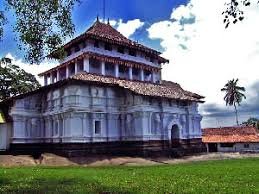Built in the 14th century under King Bhuvanekabahu IV, Lankatilaka Temple stands as a masterpiece of the Gampola era. Designed by South Indian architect Sathapati Rayar, the temple blends Dravidian, Sinhalese, and Indo-Chinese architectural styles. Nestled on Panhalgala Rock, it offers breathtaking views and intricate stone carvings. The temple features both Buddhist and Hindu deities, including Upulvan, Ganapathi, Saman, Vibhishana, Kataragama Deviyo, and Kumara Bandara. Its rock inscriptions in Sinhala and Tamil make it a vital part of Sri Lanka’s heritage.
Key Features:
- Architectural Significance: A mix of South Indian and Sinhalese influences.
- Historical Inscriptions: Longest Tamil inscription in Sri Lanka.
- Sacred Shrines: Dedicated to multiple deities for Buddhist and Hindu worship.
- Scenic Location: Built on a rock offering panoramic views.
- Historical Significance: Built in 1344 AD, featuring rock inscriptions in both Sinhala and Tamil
- Architectural Features: Originally a four-storied structure, now partially preserved
- Religious Importance: Houses six devales dedicated to gods such as Vishnu, Saman, Vibhishana, Ganapathi, Skandhakumara, and Kumara Bandara
- Nearby Attractions: Close to Gadaladeniya Vihara, another historic temple
Visited 56 times, 3 Visits today

